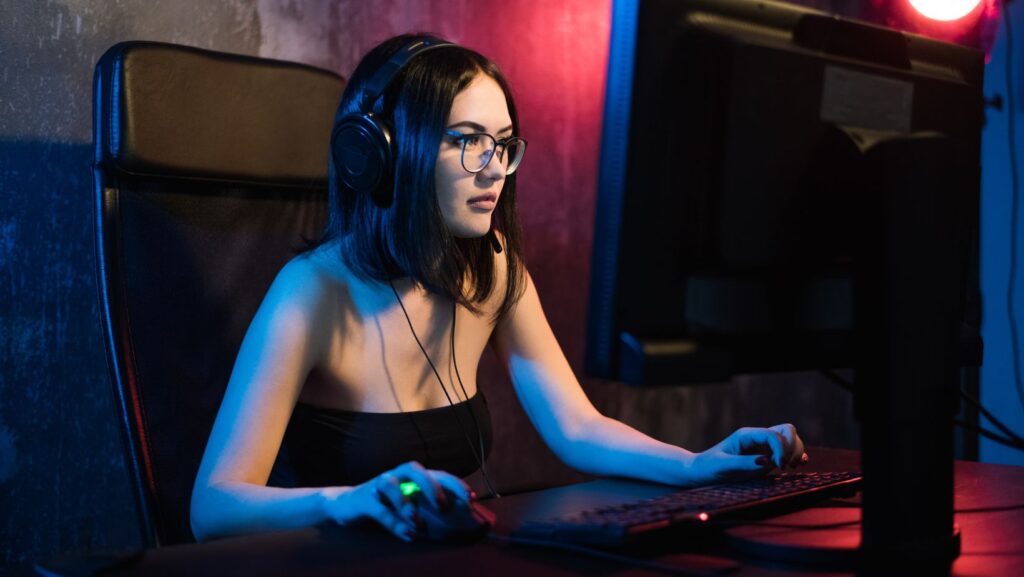When it comes to competitive gaming or esports, the prevailing belief is that all it takes to reach the top is a skill and the commitment to show up at events. However, this narrative oversimplifies the barriers that many gamers, particularly women, face. While men and women possess the potential to excel in gaming, the reality of the esports landscape reveals a complex interplay of social, economic, and cultural factors that disproportionately affect women. This article tries to explain why most successful gaming champions are mostly men, as enumerated at Casino.com, exploring the socialization of gaming, the exclusivity of male-dominated events, and the high cost of entry into popular gaming genres.
Women Are Not Socialized to Be Gamers
One of the primary reasons for the gender disparity in esports is the way society socializes men and women differently from a young age. Traditionally, gaming has been marketed and perceived as a male-dominated activity. Video games, especially those in the competitive scene, often feature male protagonists and are advertised in ways that appeal more to young boys. This cultural framing discourages many girls from engaging with video games from an early age, thus reducing the pool of potential female esports competitors.

From childhood, boys are more likely to receive gaming consoles and games as gifts, participate in gaming-related discussions, and be encouraged by peers and family members to pursue gaming as a hobby. In contrast, girls who express interest in gaming may face subtle or overt discouragement. They might be steered towards more traditionally “feminine” activities, or they might not see themselves represented in the games they play or the communities around those games. This always leads to a lack of female role models.
When young women do not see successful female gamers, developers, or commentators, it becomes harder for them to envision a place for themselves in the gaming world. This lack of representation can lead to feelings of alienation and the perception that gaming is not for women.
Men-Only Events
Another significant barrier to female participation in esports is the prevalence of men-only or male-dominated events. Historically, the competitive gaming scene has been dominated by male players, creating an environment where women often feel unwelcome or marginalized. Many high-profile tournaments and leagues have few, if any, female participants, and this lack of diversity can discourage women from pursuing competitive gaming.
The culture within these events can also be unwelcoming or even hostile towards women, creating an environment where women must not only prove their gaming skills but also endure and navigate a challenging social landscape. This added pressure can deter many talented female gamers from entering or staying in the competitive scene.
Furthermore, networking within the esports community often happens in informal, male-dominated settings. These networks can be crucial for gaining opportunities and support, but women may find themselves excluded from these circles. The exclusive male mentality can make it difficult for women to access the same resources, mentorship, and sponsorships that are readily available to their male counterparts.
The High Cost of Entry into MOBAs and MMOs
Economic barriers also play a crucial role in the gender disparity within competitive gaming. Popular esports genres like MOBAs and MMOs often require significant financial investment. High-end gaming equipment, such as powerful PCs, specialized peripherals, plus high-speed internet connections, are essential for competitive play. These costs can be prohibitive for many aspiring gamers, but they can be particularly challenging for women.

Statistically, women tend to have lower disposable incomes than men, which can limit their ability to invest in the necessary gaming gear and resources to compete at a high level. Additionally, women who might already be hesitant to enter the gaming world due to social and cultural barriers might be less inclined to make such substantial financial investments.
Moreover, time is a critical resource in becoming a top-tier gamer. Mastery of complex games like MOBAs and MMOs requires countless hours of practice. Women, who often shoulder a disproportionate share of household and caregiving responsibilities, may find it harder to dedicate the time necessary to reach the highest levels of competitive play. This time constraint is intensified by the need to balance other aspects of life, such as education and career, further limiting the time available for gaming.
Bottom Line
The underrepresentation of women among gaming champions is not merely a matter of skill or opportunity but is deeply rooted in societal norms, economic barriers, and the structure of the esports community itself. From the way society socializes young girls away from gaming to the exclusionary nature of many competitive gaming events to the high financial and time costs of entering and excelling in popular game genres, the challenges women face are multifaceted.


More Stories
Ranking The Most Anticipated Upcoming Ps5 Games of 2024 and Beyond: New Playstation 5 Release Date
Extreme Run 3D: A Thrilling Endless Runner Experience
The Most Innovative Game Mechanics of the Last Decade